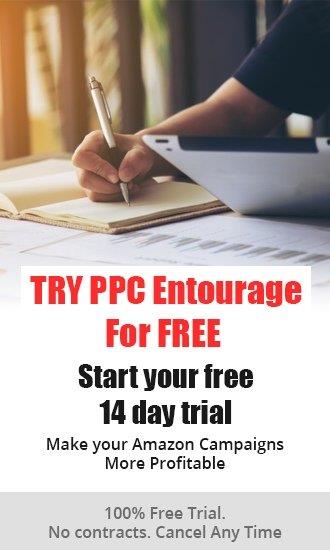Optimizing your Amazon Advertising successfully isn't as intimidating as a lot of sellers believe it to be. Optimization simply comes down to improving the different elements of your Amazon ads, so that they gain more visibility, generate more clicks and waste far less of your Ad Spend budget.
There are a number of components that go into a PPC ad campaign that consistently attract and convert online shoppers. This means there are multiple elements to optimize.
For instance, you’ll want to structure your campaigns to provide a strong foundation for precision keyword targeting, while focusing on controlling your bids.
In Part 2 of our three-part series on How to Optimize Your PPC Campaigns, you will discover the most basic form of optimization, as well as six strategies for target bid optimization.
SKU Optimization
The most basic form of optimization is SKU optimization.
Find the ASINs that are underperforming relative to your ACoS targets. You want to identify those SKU's that are underperforming across your various Ad Groups to reduce the traffic being driven to them, while promoting more traffic to those SKUs that are performing well.
For those SKUs that are underperforming, take the time to see if they may be performing well in certain areas (drive traffic to those campaigns and Ad Groups).
Target Bid Optimizations
There are six different target bid optimizations.
- Zero Sales Targets (bleeding keywords) – these are the targets that have clicks but have zero sales. It's vital to identify them as soon as possible because they are likely wasting a significant portion of your Ad Spend.
Resolve this problem by establishing a threshold for clicks without a sale (7 to 8). Look to see if the keyword in question is truly relevant. This will guide you as to whether to pause or lower the bid on the keyword.
Do not archive your target because this causes the keyword to be removed completely. You want to have the ability to retest the keyword in future campaigns. The keyword may perform better as you acquire additional and better reviews, while adding other components that make for a stronger converting listing (like video content).
- Unsalvageable Targets (super-high ACoS) – these targets have very high ACoS (sometimes as high as 100% or more). The initial urge is to immediately pause these targets, but ask yourself...is there enough empirical data to support that decision? Has there been only a very limited number of clicks to date?
Look at where your product is in its life cycle. Newly launched products often come with a higher ACoS. Allow time for the target to accumulate data.
Set an unsalvageable threshold between 100% to 120%. If your ACoS surpasses this threshold, it's probably not going to be a viable target and there is likely something that needs to be fixed within the listing. For example, look at the relevancy of the target to the product you are selling.
If you have enough data, look at the Search Terms related to your keywords…those that converted well, and which ones did not. PPC Entourage has a feature, Keyword Cleaner, designed to reveal which search terms have generated sales and those that have not on a keyword level.
Another option is to do a Negative Exact on the search terms that aren't working, while permitting the keyword to remain in use.
Armed with these insights, you can now decide to either pause the bid or lower the bid substantially. Also, be sure to periodically revisit and test.
- Unprofitable Targets (high ACoS %) – these are high ACoS targets, but they are not unsalvageable (in the range of 50% to 80% ACoS). With fine-tuning, a lower/more favorable ACoS can be achieved.
Ask yourself, is there a sufficient amount of Ad Spend data upon which to make the optimization? What is your target ACoS? What is the optimal bid to match that ACoS?
To answer these questions, it's crucial to know what your profit margins are. Using a tool like Entourage Margins will quickly identify where every dollar is spent and how much you’re keeping.
The devil is in the details. You must look at the full picture.
You have to figure out what your maximum bid to breakeven should be.
Max Bid Formula:
- determine the Click to Order Ratio (how many clicks on average does it take for a keyword to generate a sale).
- determine your breakeven cost for acquisition. This formula consists of the Cost of Acquisition divided by the Click to Order Ratio.
CPA/CTO Ratio = Max Bid
Use this formula to identify what your maximum bid in order to breakeven should be, so that you can prudently lower your bid price.
- Zero Impression Targets – these are relevant keyword targets that are not getting any Impressions. They may have previously shown Impressions but are no longer doing so.
Step one is to determine if the target is relevant. If it was previously showing Impressions, this indicates a degree of relevancy.
Look at how long it has been since the target has shown Impressions. Take a closer look at the campaign. Perhaps you used a Negative Phrase or Negative Exact Match (over-optimized with Negatives), that caused this situation to occur.
Next, review any sweeping bid changes you may have recently made that has caused the campaign to no longer get Impressions.
Also ask yourself if the target is crowded by too many other targets. Remember, less is more...less targets, keywords, and items in an Ad Group, but a higher number of campaigns, equals a more efficient and effective structure.
If keywords/targets become too crowded within an Ad Group, this may cause them to get far fewer Impressions, as they are competing for the same budget for that campaign. To rectify this situation, you can raise your bid price, or isolate the target in question and place it in its own campaign.
Finally, review your other campaigns to determine if some of them are also too crowded with keywords/targets to prevent zero Impressions from occurring.
- Zero Clicks Targets – no one cares about the ad. This usually occurs because there is an extremely weak Offer or very poor relevancy to the keyword you are going after.
If it was previously getting clicks with a high click through rate percentage, then you have to examine what is causing it to do so no longer.
- Is your competition running a better deal?
- Have your reviews taken a dive?
- Is your Offer poor?
- Is it a problem with your images or other facets of the listing?
- How long has it been since you've been getting zero clicks?
- What does the Placement optimization look like?
Work through a list of possibilities and then set about making corrections in those areas that need it. Compare your listings on desktop and mobile to those of your competitors'. You'll also want to check your Placements and optimize accordingly to your objectives (i.e. to reach TOS).
- Deep Bid Optimization for Placements - Placement optimization works on a campaign basis only. You can't optimize Placements based upon Ad Groups. They are applicable for Sponsored Products campaigns only. You can modify bids on Top of Search or Product Pages to drive more or less traffic to those locations.
In order to do this (in Seller Central), determine the difference between TOS and Rest of Search conversion rates, note your clicks, orders and ACoS, and then tweak your base bids and modifiers to drive traffic to the Placements that are doing well.
- Determine the bid decrease which will be the best 'base bid' for the Rest of Search,
- Determine and add the modifiers.
Based upon conversion rate, the goal is typically to drive a larger amount of traffic to the Top of Search, then to the Product pages and less traffic to the Rest of Search. This is why you lower the base bid.
As with all advertising strategies, you need to test and tweak your campaigns to find out for sure if it works for your products. Let your ads run for a while to collect enough data to analyze, then make adjustments.
Test with smaller budgets (10% to 30%) depending on how deep your advertising budgets are.
 A meticulously conceived and well executed approach to optimizing your advertising campaigns can place your business on the path to achieving success as an Amazon seller. The key is to think things through and implement – to lay a foundation that can't be shaken.
A meticulously conceived and well executed approach to optimizing your advertising campaigns can place your business on the path to achieving success as an Amazon seller. The key is to think things through and implement – to lay a foundation that can't be shaken.
Building a foundation takes time, not to mention experience and know-how.
The Entourage Playbook Series contains 28 proven-in-the-trenches strategies that will give you a strong foundation to build a profitable business.











